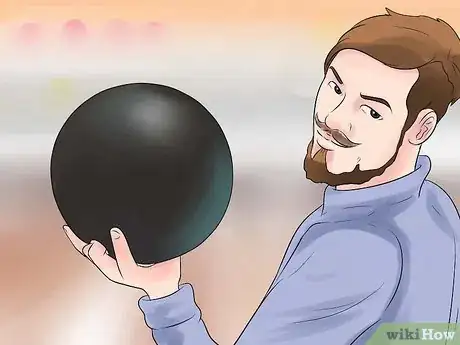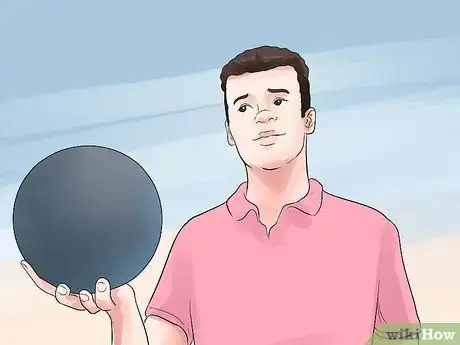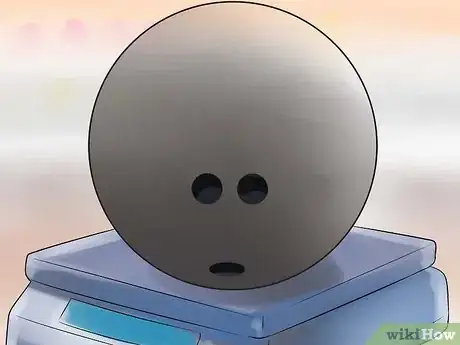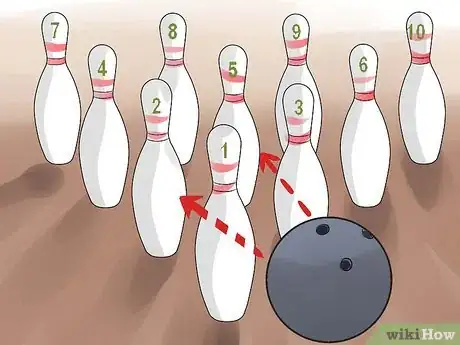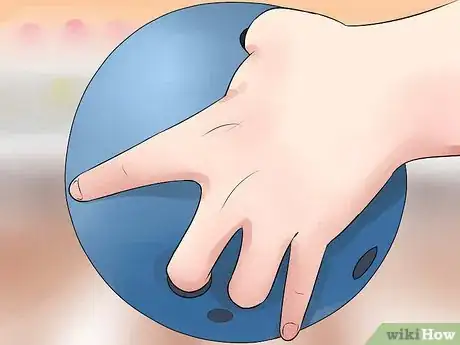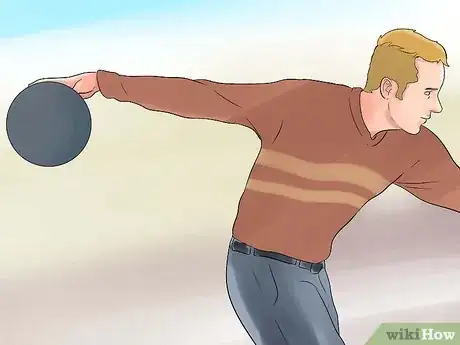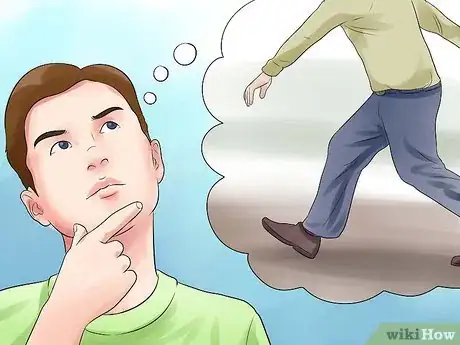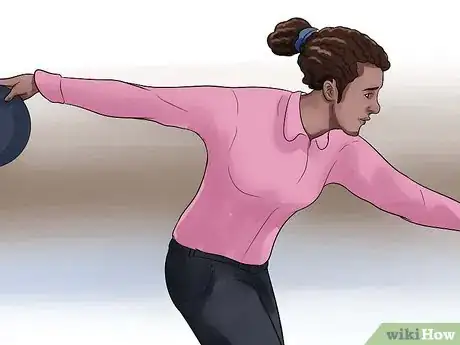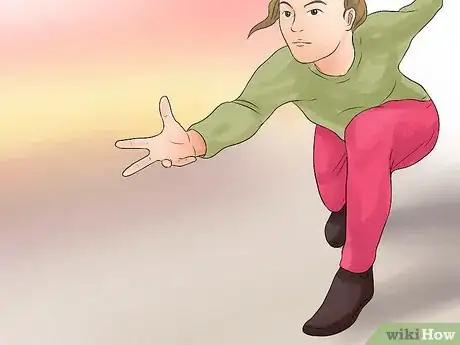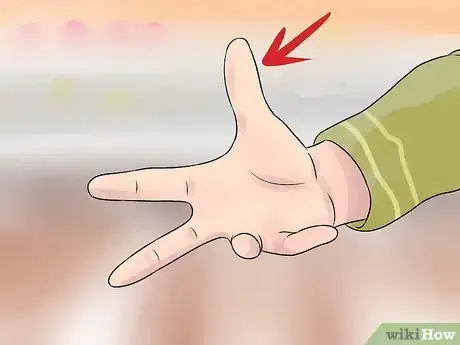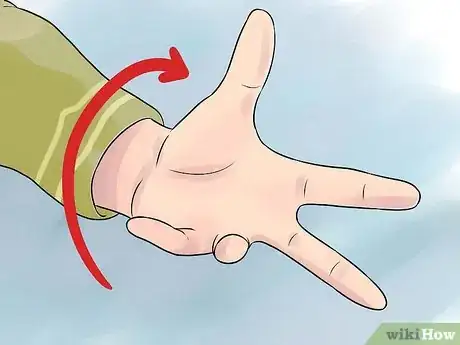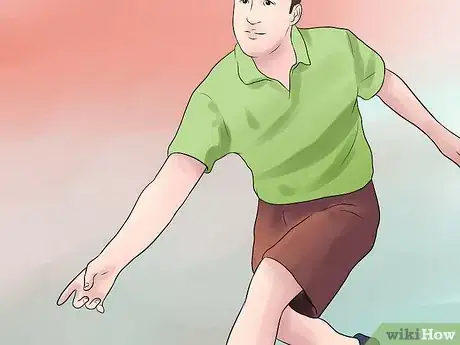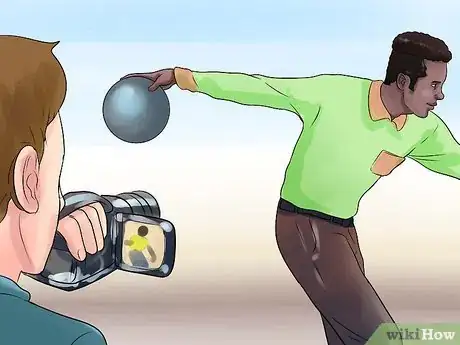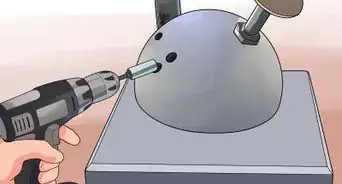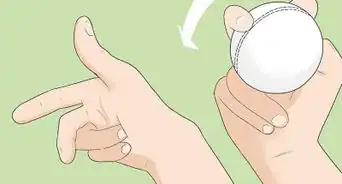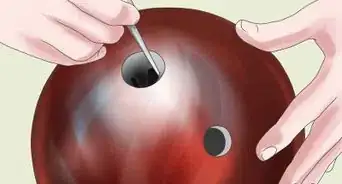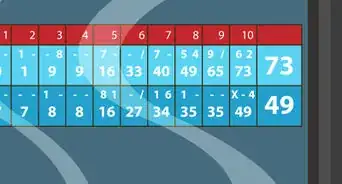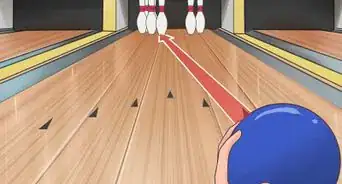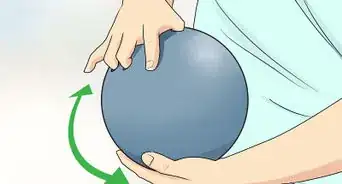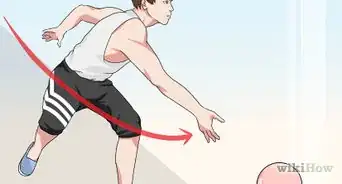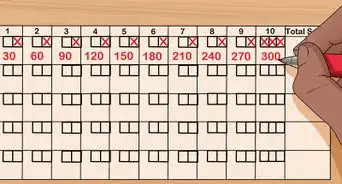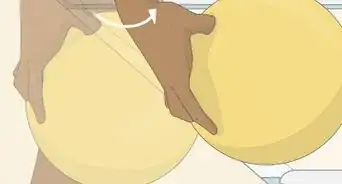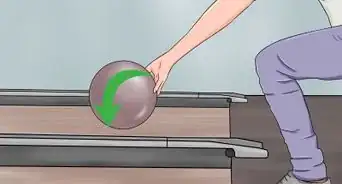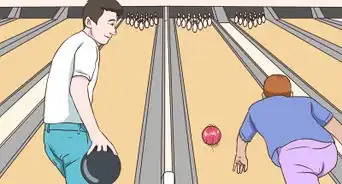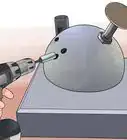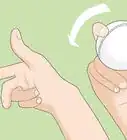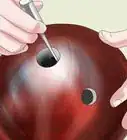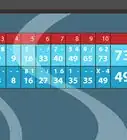wikiHow is a “wiki,” similar to Wikipedia, which means that many of our articles are co-written by multiple authors. To create this article, 13 people, some anonymous, worked to edit and improve it over time.
There are 7 references cited in this article, which can be found at the bottom of the page.
wikiHow marks an article as reader-approved once it receives enough positive feedback. In this case, 84% of readers who voted found the article helpful, earning it our reader-approved status.
This article has been viewed 392,970 times.
Learn more...
Whether you have watched a professional bowling event at home or you are a casual enthusiast who has paid attention at the alley, you have likely noticed that the most successful bowlers know how to consistently spin the ball in order to "hook" the ball into the pins. "Spin" refers to the ball's rotation along its axis as it moves down the lane, and is largely dependent on how you release the ball. As the ball travels along the boards towards the pins, the rotating axis gradually tilts upwards, causing a hook delivery that enters the pin deck at an angle and increases your chance of a strike.[1] It's not the easiest technique to master, but the results make it worthwhile to learn.
Things You Should Know
- Maximize your chances of success by choosing a bowling ball with the correct grip and weight.
- Identify the "pocket" in your lane, or the gap between the pair of pins you'd like to hit with your bowling ball.
- Use the "Four Step Approach" as you prepare to spin the ball. During your backswing, make sure that your wrist and arm are completely straight.
- Twist your hand slightly as you release the ball to give it a little bit of spin.
Steps
Getting Ready to Bowl
-
1Find a ball with the right grip for you. The holes must fit your fingers in such a way that you can hold the ball without having to squeeze and you can let go without your fingers getting stuck. Because you will be imparting rotation on the ball in the final split seconds that your hand is in contact with it, the importance of grip cannot be overstated.
- With the ball resting in the palm of your dominant hand, put your middle and ring finger all the way into the two holes that are side-by-side, and your thumb in the hole under them. The holes should be the size of the fingers and thumb, and you should be able to hold the ball easily in the palm of your hand. There shouldn't be tension in the web of your thumb, nor should it be slack.[2]
- It should take very little pressure to hold the ball in your hand. If you could break an egg with that amount of pressure, it's too much.
-
2Identify the type of ball you are using. The characteristics of the core or interior weight block of the bowling ball play an important part in the ball's performance. While there are a number of different core alignments, there are two basic categories into which all balls fit. Determine which type you are using before you get started.[3]
- Look over your bowling ball and see if it has just one "pin"--the spot on the exterior, usually of a different color, indicating the orientation of the core--or a single normal pin plus a second PSA indicator/mass bias pin.
- If there is only one pin, the ball should have a symmetric weight block. If you bisected the ball along the axis of the pin, you would discover that both sides are symmetric. This type of ball may be easier for a beginner to handle.
- A ball with an asymmetric weight block should possess two pins or a pin and an indicator. Just as the name indicates, these balls do not contain symmetric cores, and can contain any shape from that of a cube to something resembling the letter "L." It may prove slightly more difficult for a beginner to attain consistent performance with these bowling balls, but practice with a single ball can certainly change that.
Advertisement -
3Select a ball of the appropriate weight. There are two separate guidelines used to suggest the size of ball that should be used. One rule of thumb focuses on the sex of the bowler, and suggests that adult women should use a 10-14 pound ball, while adult men use a 14-16 pound ball.[4] The alternate guideline states that a bowler should use a ball roughly 10% of their body weight, up to the 16 pound maximum size of the ball for those over 160 pounds in weight.[5]
- It is important to use a ball of the appropriate weight in order to impart the necessary amount of spin. A strong individual using a smallish ball could easily impart too much torque and put the ball in the gutter. A weaker individual using too heavy a ball could struggle to impart enough spin in order to make the ball hook.
- The weight of the ball should be clearly marked on it.
Making the Ball Spin
-
1Determine where the pocket is. The pocket is the space between two pins that you want to target with the ball. If you're right-handed, the pocket is the space between the number 1 pin (the foremost pin) and the number 3 pin (the pin just behind and to the right of number 1). If you're left-handed, your pocket is between the number 1 and number 2 pin (the pin just behind and to the left of number 1).
-
2Grip the bowling ball. The style of grip that you use can determine the intensity of the ball's hook--in other words, at what angle the ball enters the pocket. Remember that the greater the angle, the better your scoring potential.
- A "relaxed" grip is more likely to produce a straighter roll, and thus a minimal hook. In this grip, the hand is flexed back at the wrist, so that as you pass into the forward swing it is on top of the ball.
- For a "strong" grip, the hand bends forward, as if to cradle the ball between your palm and inner wrist. If seen from the side, the angle from your forearm to your thumb should appear to be 90 degrees. This grip can provide a greater amount of spin, and from that a greater hook.
- A "firm" grip is an intermediate form that results in a moderate hook. In this grip the wrist neither bends nor flexes, creating a continuous line from your forearm through your hand.[6]
-
3Decide where your stance should be based on the combination of pocket position and grip. As you face the lane, imagine its boards grouped into three sections: outside left (towards the left gutter), middle, and outside right (towards the right gutter). Keeping in mind the strength of your grip and the anticipated amount of hook it will produce, decide which board(s) your sliding forward foot should align with.
- Relaxed grip: The ball should travel straight down the lane into the pocket, so if you're right-handed, your stance should be in the outside right, and lefties in the outside left.
- Firm grip: Your stance should be in the middle, so the ball curves moderately (either left or right) and enters your target pocket.
- Strong grip: You want to allow plenty of room for the ball's hook to curve around and enter the pocket. If you're right-handed, you should be on the outside left side; if you're left-handed, you should be on the outside right.[7]
-
4Think about your approach before you begin. One of the standard forms is referred to as the "Four Step Approach." For this approach, begin standing up straight with your feet directly under your body. Hold the ball from underneath with your bowling hand at about mid-chest height (higher for slower bowlers, lower for faster bowlers), and support the ball with your non-bowling hand. As you move through the four steps, keep your bowling arm's elbow as close to your hip as possible, bend your knees slightly, and keep your feet pointed towards the pins. Your shoulders should be squarely facing front. (The following directions are for right-handed bowlers; if you are left-handed, reverse the sides.)
- Take one step forward with your right foot and simultaneously bring the ball forward to a position over that foot. Keep your non-bowling hand supporting the ball at this point.
- Move your left foot forward as you lower the ball close to a knee-level position and then further back behind you, making a half-circle. Your non-bowling hand will have released the ball at this point.
- Take another step forward with your right leg. At the same time you should be entering the highest point of your backswing with the ball.
- Bring the ball forward as you take your last step toward the line with your left leg. Your right leg should subtly pass sideways behind your left as you plant your left leg and release the ball. Lower your hips and shift your weight slightly back, bending your torso forward at a 15-degree angle.[8]
-
5Keep your arm and wrist straight during the backswing. You will not impart spin by bending or twisting your wrist or arm at this point.[9] Instead, it is through proper delivery and release of the ball that you will impart the spin that results in a "hook."
-
6Release the ball as your arm moves between the laces and toe of your forward-sliding shoe. Maintain a constant grip as your hand moves into the forward swing, passing the heel of your sliding shoe (the left foot for right-handed bowlers), and then release the ball as it passes the laces. This is the optimum point for momentum to carry the ball onto the lane.[10]
-
7Make sure your thumb is the first finger out of the ball. The spin comes from your fingers as they release the ball, rather than the wrist. Releasing the thumb first lets the ball roll off the hand, which is where it gets the torque it needs for spin.
-
8Rotate your hand just slightly from the wrist at the moment of release. A small, 15-degree rotation (counterclockwise for right-handed bowlers and clockwise for left-handed) helps add spin.[11]
- Imagine positioning your hand as if coming into a handshake.
-
9Follow through with the swing. Continue to move your arm upward and forward toward the pocket as you release the ball (and after).
-
10Adjust based on results. You must first work on consistency. The ability to put all the elements together and repeat them are the keys to success. In the process, think about things like your stance position or the type of grip that you employ.
- Also work on your timing with the Four Step Approach: you want to make sure that your foot and the ball arrive at the foul line at the same time. Try recording yourself bowling to get a better sense of how good your timing is.
Community Q&A
-
QuestionHow do I spin with no thumb in the hole?
 Gary Schultz Jr.Community AnswerThrow the ball the same as you normally would, but be under the ball to support it before you release it.
Gary Schultz Jr.Community AnswerThrow the ball the same as you normally would, but be under the ball to support it before you release it. -
QuestionHow do I stop spinning the ball?
 Community AnswerYour hand is on top of the ball at the time of release. To achieve proper rotation, your hand should be closer to the middle line or horizon of the ball at release.
Community AnswerYour hand is on top of the ball at the time of release. To achieve proper rotation, your hand should be closer to the middle line or horizon of the ball at release. -
QuestionHow do I grip the thumb hole when bowling?
 Brandon RattrayCommunity AnswerI've discovered with an offset thumb hole with less thumb, there is more ball rev. Two finger holds have insane rev but it's harder to hit your mark. And if my thumb is buried, I stay more behind, giving me the most control to hit the mark, very little ball rev with an increased ball speed. So the answer is your way is the best way to grip the ball, depending on what you want the ball to do.
Brandon RattrayCommunity AnswerI've discovered with an offset thumb hole with less thumb, there is more ball rev. Two finger holds have insane rev but it's harder to hit your mark. And if my thumb is buried, I stay more behind, giving me the most control to hit the mark, very little ball rev with an increased ball speed. So the answer is your way is the best way to grip the ball, depending on what you want the ball to do.
References
- ↑ http://www.bowlingball.com/BowlVersity/how-to-put-spin-on-a-bowling-ball
- ↑ http://www.humankinetics.com/excerpts/excerpts/choose-the-right-bowling-ball
- ↑ http://www.real-world-physics-problems.com/physics-of-bowling.html
- ↑ http://www.bowlingball.com/info/ball_weight.html
- ↑ http://www.humankinetics.com/excerpts/excerpts/choose-the-right-bowling-ball
- ↑ http://bowl.com/Source/Source_Home/Mastering_the_Hook/
- ↑ http://bowl.com/Source/Source_Home/Mastering_the_Hook/
- ↑ http://www.iowabowl.com/jcusbcba/Tips/4_step_approach_in_bowling.htm
- ↑ http://helpwithbowling.com/tips-for-bowling-hook-curve.php
About This Article
To make a bowling ball spin, first find your pocket and grip the ball strongly. Next, bend your hand forward like you’re cradling the ball between your palm and inner wrist. As you swing back, keep your arm and wrist straight. Then, when you release, make sure your thumb is the first finger out of the ball and rotate your hand just slightly from the wrist to add spin. Finally, follow through by moving your arm upward and forward toward the pocket. For more bowling strategies, like how to perfect your stance, keep reading!
